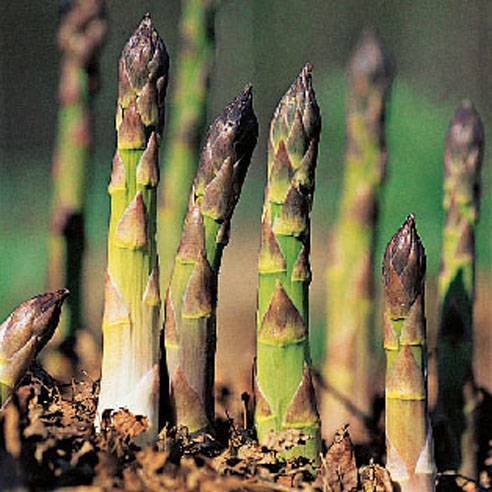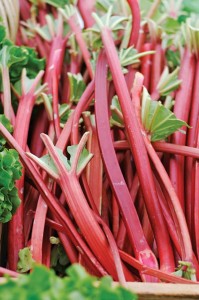Seasonal and organic food is very rapidly making a comeback in today’s culinary society, so I figured it would be absolutely necessary to discuss (at least once a month) the fruit or veggie that is being celebrated at that moment. Since it’s almost mid-April and the weather’s been exceptionally nice this year, I’m considering this to be Asparagus and Rhubarb month!!!!! Just in case you may not be familiar with the two, I’ll divulge some hidden secrets I’ve recently researched on these two wonderful spring goodies…
Asparagus:
– The plant itself is from the Liliaceae family (lily) with a variety of species native from Siberia to Africa (generally the African species are grown as ornamental house plants)
-Its tuberous roots give rise to branches of pine like leaves producing yellow flowers in the spring and red berries in the fall
– In the culinary world, it’s only the young shoots that are eaten and they are low in calories, contain no cholesterol and are a good source of thiamine (vit B1), folacin, iron, vitamin C and A, phosphorus
-When buying asparagus, look for crisp, straight, bright green stalks with compact tips
– Store the stalks by wrapping their bottoms in a damp paper towel and placing them in a plastic bag in the fridge
– Prepping asparagus requires you to cut off the thicker and chewier bottoms (which can be used for stocks)
Rhubarb: 
– Originating from Siberia but growing in popularity in China around 2700BC, this plant has only recently become a culinary extravaganza being known for its medicinal powers until then (the roots make a great purgative and laxative)
– It is a great source of calcium, Vitamin C and potassium…. and can have it’s fruit like qualities enjoyed even before most fruits are available
– DON’T eat the leaves…. they contain oxalic acid which can irritate the mouth but in extreme cases can be fatal (who knew?!) but only if you consume about 5 kg of the nasty sour leaves at once
-When buying Rhubarb, look for crisp, firm stalks that vary in colour from green to deep ruby red (good to know is that greenhouse rhubarb has small yellow leaves, rosier coloured stalks and milder flavour than its natural cousin)
– Keep it wrapped in the fridge or freeze it if cleaned!